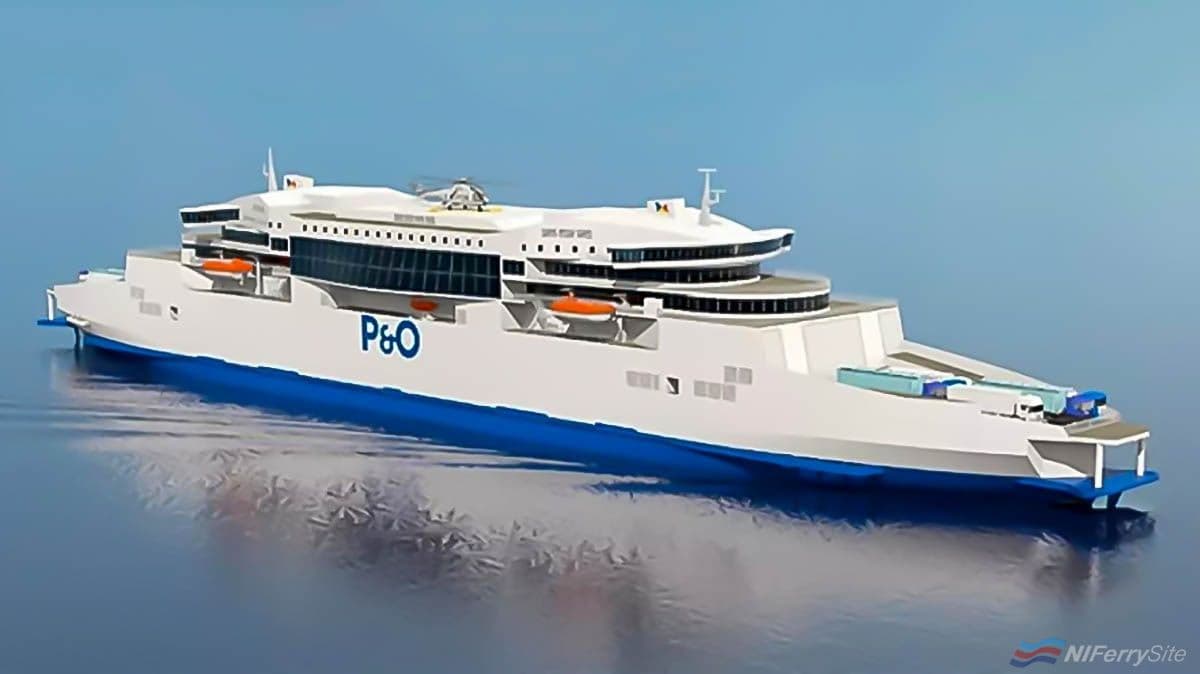Following P&O Ferries announcement earlier this week that they are investing €260m in two new cross channel ferries for their Dover to Calais route, some images have started to appear from China. P&O Ferries themselves have not yet released any artists impressions of the new ships, which according to information published by Guangdong Association Shipbuilding Industry will be 230.5m long, 30.8m wide, and have a service speed of 20.8 knots.
The association also state that the double-ended vessels will have a maximum capacity of 1,800 passengers, a at total vehicle deck capacity of 3,658 metres. This is slightly different to the figures stated by P&O Ferries in their press release, which was 1,500 passengers and 2,800 lane metres PLUS 200 cars (which could amount to around 3,650 lm total).

The contract for the new ferries, worth €260m, was signed by P&O Ferries CEO Jeanette Bell and Chen Zhongqian, Chairman of the Board of Directors of Guangzhou Shipyard at P&O Feries’ Channel House in Dover. A hybrid Diesel-Electric and battery system has been selected to power the new ships, which will use azimuth thrusters at either end of each vessel from propulsion instead of the conventional propeller and rudder configuration.

The advantage of these azimuth thrusters, commonly referred to as pods, is that they can be rotated up to 360 degrees on the horizontal axis. This means that the ships full power can be directed in any direction horizontally, or even in different directions, and does away for the need for bow and stern thrusters.
A more in-depth article on these new ships is currently under construction, and will be available later in the week on the blog. In the meantime, more information can be found in the P&O Ferries press release here or at Shippax.
